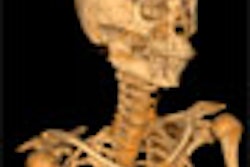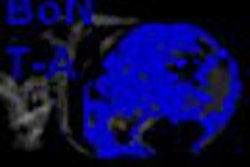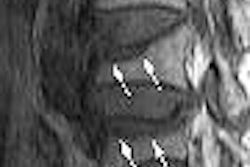Imaging Systems for Medical Diagnostics: Fundamentals, Technical Solutions and Applications for Systems Applying Ionizing Radiation, Nuclear Medicine Resonance and Ultrasound by Arnulf Oppelt, ed.
John Wiley & Sons, Hoboken, NJ, 2006, $145
This totally up-to-date text is an absolute gem. The efforts of the editor, and the 85 contributors, will be appreciated for years to come.
Just turning the pages is a delightful activity as the reader discovers "pearls" of discourse and wonderful explanatory graphics. For example, the first chapter, "Principles of Image Processing," has a discussion on flexible alpha bending that nicely outlines -- with numerous color examples -- the mathematics for this method of image fusion. This is one of many discussions on image processing featured in the book.
Imaging Systems pays heed to fairly mature technologies and their limitations (i.e. helical heating tungsten filament and conventional x-ray tube construction), but the emphasis is always on new product offerings, such as tungsten flat emitter cathodes and rotating envelope x-ray tubes.
Practical information is included, such as the service life plot for helix tungsten filaments and the geometric anisotropies produced by the angled anode. This text is rich in that it answers the questions that it poses: For instance, how is the fluoroscopic exposure used to predict a single exposure? Why is blue-tinted film preferred for viewing? How does 2D CT helical reconstruction differ from 3D helical CT reconstruction?
Imaging Systems offers a complete overview of major aspects of blood flow depiction, including color Doppler, MRI (time-of-flight, phase-contrast), C-arm and CT angiography. Summary tables for the MRI protocol acronyms used by major vendors are particularly helpful.
It's quite rare to see discussions of specialty modalities so I particularly enjoyed sections on functional MRI, rotational C-arm imaging, surgical MRI, and 3D ultrasound. There are also valuable sections on hybrid imaging (PET/CT), endoscopic, and molecular imaging. The special attention given to clinical imaging solutions is one of the book's strengths.
A sense of consistency is maintained throughout the text despite the large number of contributors, all of whom are affiliated with Siemens Medical Solutions. While product names abound, there is no evident bias on the part of the writers. Descriptions of products were used to convey technical information versus promoting a single methodology.
Improvements to the book are not out of the question. The small size, but corresponding thickness, makes the book rather cumbersome. A CD of the graphics would also be a welcome addition.
Imaging Systems for Medical Diagnostic is a cohesive text, wonderfully organized, and consistent in its mathematical content with superbly chosen graphics and figures.
By William Pavlicek, Ph.D.AuntMinnie.com contributing writer
May 22, 2006
William Pavlicek, Ph.D., is a medical physicist and radiation safety officer in the department of radiology at the Mayo Clinic in Scottsdale, AZ. He is also an assistant professor of radiologic physics at the Scottsdale campus of the Mayo Clinic College of Medicine. Pavlicek serves as an adjunct professor in the Harrington School of Biomedical Engineering at Arizona State University in Tempe.
The opinions expressed in this review are those of the author, and do not necessarily reflect the views of AuntMinnie.com.
Copyright © 2006 AuntMinnie.com



















